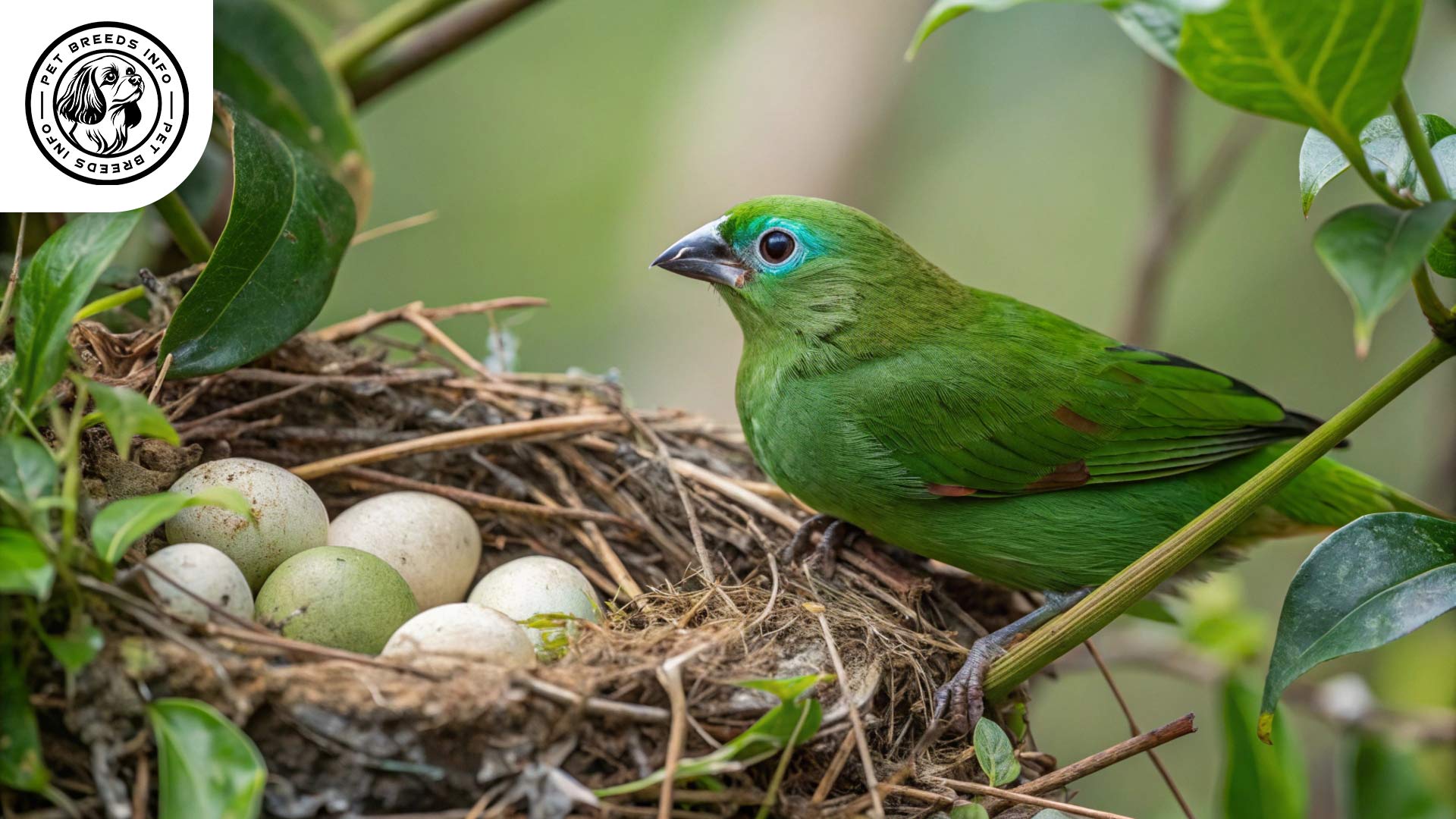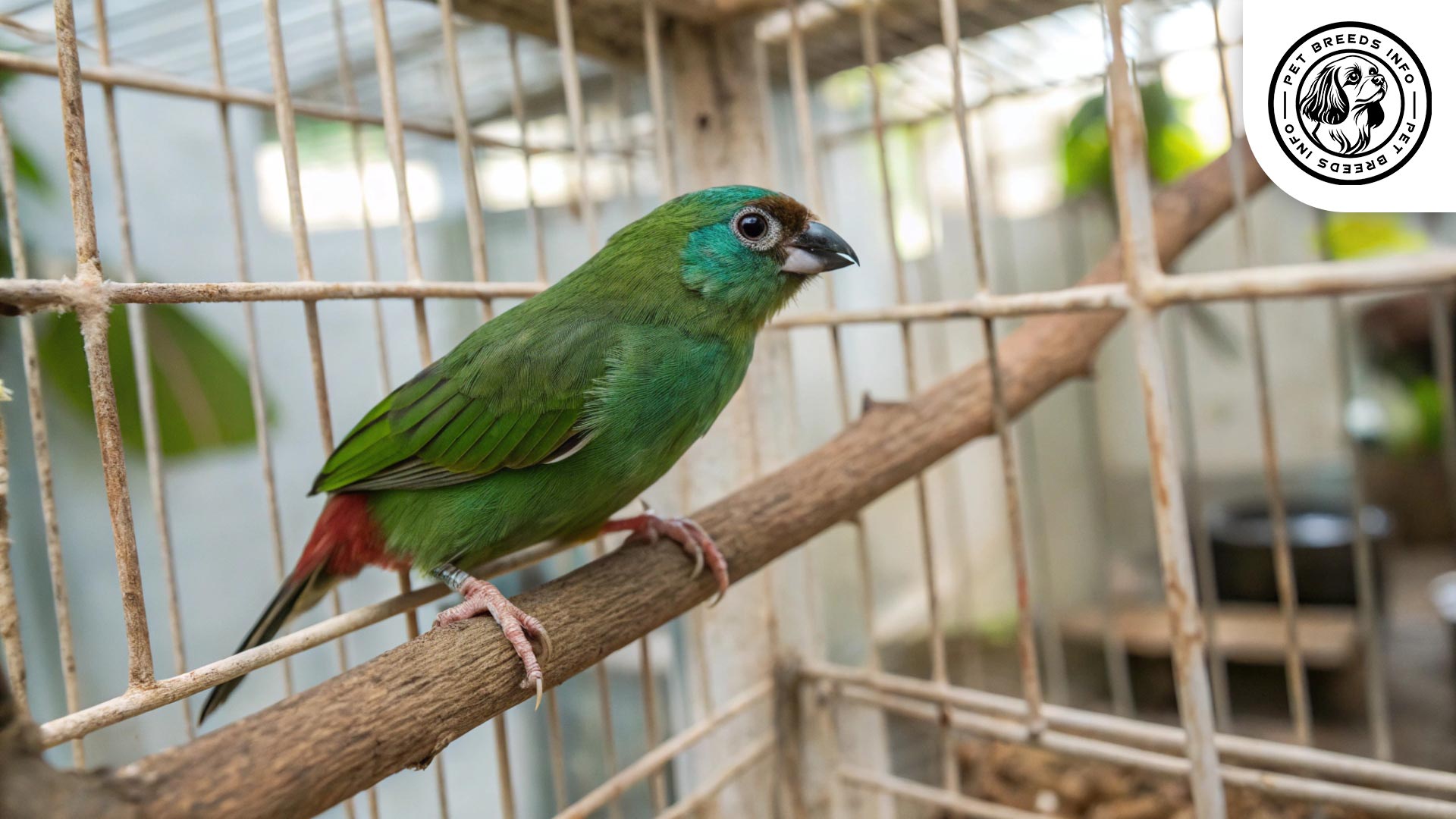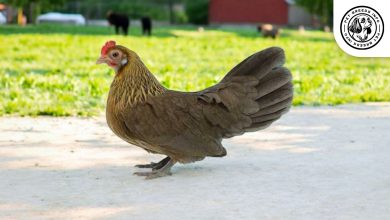Green-faced Parrotfinch Bird: Personality, Lifespan, Food & Care
General Introduction of the Breed
The Green-faced Parrotfinch (Erythrura viridifacies) is a small, colorful bird belonging to the Estrildidae family. It is native to the Philippines, primarily found in forested areas of Luzon and neighboring islands. This bird is sometimes called the Philippine Parrotfinch due to its geographic origin.
The Green-faced Parrotfinch has been admired for its striking appearance and active behavior. While it is more commonly observed in the wild, some aviculturists have successfully kept and bred them in captivity.
Table of Contents
| Common Name | Green-faced Parrotfinch, Philippine Parrotfinch |
| Scientific Name | Erythrura viridifacies |
| Origin | Philippines (primarily Luzon and neighboring islands) |
| Size | Approximately 11-12 cm (4.3-4.7 inches) |
| Lifespan | 5 to 10 years in captivity |
| Talking Ability | Not mentioned; generally not known for talking abilities like parrots |
| Colors | Predominantly green plumage with a vibrant green face and bright red lower back, rump, and tail |
| Noise Level | Not explicitly mentioned, but generally finches are not excessively loud |
| Social Behavior | Social birds that thrive in pairs or small groups |
Physical Characteristics
The Green-faced Parrotfinch is a small-sized bird, averaging around 11-12 cm (4.3-4.7 inches) in length. It has a slender, compact body with a short tail and a strong, slightly curved beak.
This species’ most notable feature is its vibrant green face, contrasting against its predominantly green plumage covering the body. The lower back, rump, and tail are adorned with bright red, creating a striking contrast. Their legs and feet are pale pinkish or flesh-colored.
Its eyes are small, round, and dark, complementing its vivid coloration. Both males and females are similar in appearance, although males tend to have slightly brighter plumage.
Read More: Green-rumped Parrotlet
Personality and Temperament
The Green-faced Parrotfinch is known for its lively and active nature. It is an energetic bird that enjoys flying and exploring its surroundings. This species is intelligent, adapting well to its environment and quickly learning to navigate complex aviaries.
Although not as affectionate as parrots, Green-faced Parrotfinches can become accustomed to human presence, especially when raised in captivity. They are social birds that thrive in pairs or small groups.
They exhibit minimal aggression but can be territorial during breeding seasons. Their playful nature keeps them engaged, making them excellent aviary birds.

Care and Maintenance Requirements
The Green-faced Parrotfinch requires ample space to fly, making a spacious aviary ideal. It can be kept in an indoor cage, but it should be large enough to allow movement and flight.
Grooming needs are minimal, as they naturally maintain their feathers. However, regular cleaning of their enclosure is necessary to keep them healthy.
This breed is sensitive to extreme cold, so maintaining an appropriate temperature is essential, especially in colder climates.
Diet and Nutrition
The Green-faced Parrotfinch primarily feeds on seeds, particularly grass seeds, in the wild. In captivity, they should be provided with a high-quality seed mix consisting of millet, canary seed, and other small seeds. Supplementing their diet with fresh fruits, greens, and sprouted seeds ensures balanced nutrition.
Avoid feeding them processed human foods, chocolate, caffeine, and avocado, as these can be harmful.
Fresh water should always be available, preferably changed daily.

Health and Common Medical Issues
This species is relatively hardy but can be susceptible to common avian illnesses such as respiratory infections, mites, and nutritional deficiencies if not cared for properly. Providing a clean environment, a well-balanced diet, and regular veterinary check-ups can help prevent such issues.
The average lifespan of the Green-faced Parrotfinch in captivity ranges from 5 to 10 years.
Read More: Green-cheeked Conure
Training and Behavior Management
While not typically trained like parrots, Green-faced Parrotfinches can become accustomed to human presence. Gradual exposure and consistent interaction can help them build trust.
They respond well to positive reinforcement, such as offering food rewards when they display calm behavior.
Interaction with Other Animals and Humans
The Green-faced Parrotfinch enjoys the company of its own species and can coexist with other small, peaceful birds in an aviary. However, it is best to avoid housing them with larger or aggressive birds.
They are not particularly affectionate toward humans but can tolerate interaction when raised in captivity.
This breed is better suited for bird enthusiasts who enjoy watching and caring for active birds rather than those seeking a hands-on pet.

Price and Availability
Green-faced Parrotfinches are not as commonly available as some other finch species. Their price varies depending on location and breeder, typically ranging from $50 to $150 per bird.
When purchasing, it is best to acquire them from reputable breeders or aviculture specialists who prioritize captive breeding over wild-caught specimens.

Conclusion and Final Thoughts
The Green-faced Parrotfinch is an excellent choice for bird lovers who appreciate the beauty and energetic nature of small finches. Its vibrant colors and active demeanor make it a captivating aviary bird.
While not ideal for hands-on pet owners, it thrives in a well-maintained environment with proper care. It is best suited for households with aviaries or spacious cages where it can fly and engage in natural behaviors.
Potential owners should consider the bird’s space requirements, diet, and susceptibility to environmental changes before deciding to keep one as a pet.
Read More: Greater Sulphur-crested
FAQ
What is a Green-faced Parrotfinch?
It’s a small, colorful bird native to the Philippines, known for its green face and red markings.
How big do Green-faced Parrotfinches get?
They average around 11-12 cm (4.3-4.7 inches) in length.
What do Green-faced Parrotfinches eat?
They primarily eat seeds, especially grass seeds, and should be supplemented with fruits and greens in captivity.
Are Green-faced Parrotfinches good pets for handling?
They are not particularly affectionate and are better suited for aviary settings where they can be observed.
How long do Green-faced Parrotfinches live?
In captivity, their average lifespan is between 5 to 10 years.





